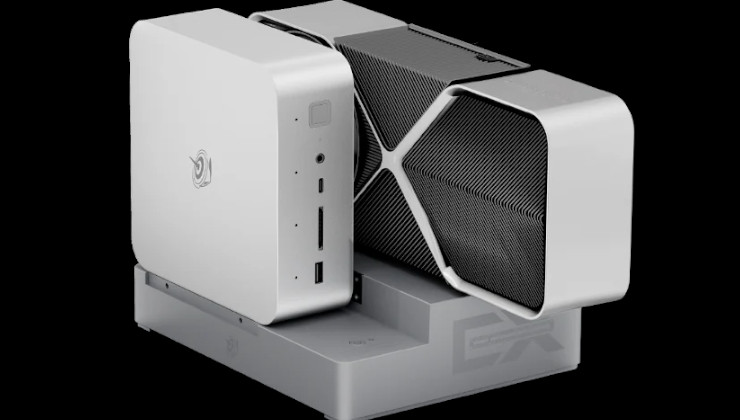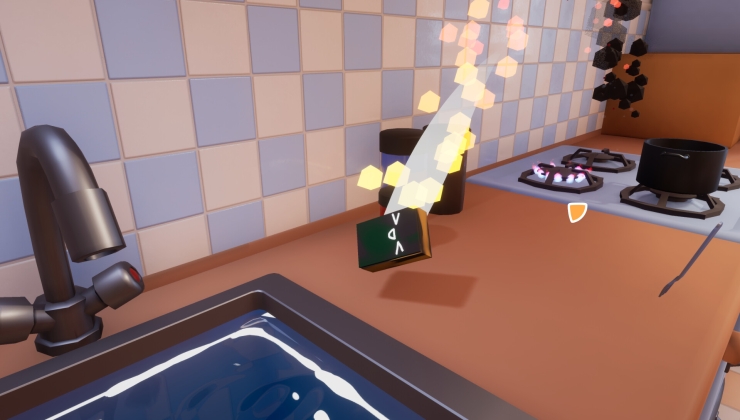One thing that is a little concerning is how much storage the bottom edition of the Valve Steam Deck will have without plugging in a microSD card, seems we now have a better idea. Thanks to a developer posting on the MetaCouncil forum, there were shots shared from behind the scenes where Valve has been posting changelogs for those with Steam Deck devkits.
Considering the low-end Steam Deck is only 64GB, it's not exactly a lot of room, although we know games will load quickly from an expansion card it's still useful to know what you've got to work with. The post shows that Valve has put SteamOS on quite the diet sitting now at 10GB.
10GB still sounds pretty big, although that does mean the low-end Steam Deck should have around 50GB. Not much of course, especially considering the colossal size of some newer games but sure is better than the original 24GB. When you think that Windows 10 needs a minimum 20GB and Windows 11 needs 64GB - it's yet another reasons for people to stick with SteamOS out of the box.
Not only that, it appears that some Steam Deck hardware has a different brand of memory between Micron and Samsung, which might just be the difference between the original devkit hardware and the newer Design Validation units.
Quoting: 3zekielQuoting: win8linuxQuoting: HoolyOr they use btrfs-subvolumes and allocate storage dynamically.
Unlikely, since BTRFS does not have casefolding which Proton uses. Casefolding for now is only available with ext4.
Hmmm I actually use proton on top of btrfs, what issues will this cause ? Can I assume some of my games are broken because of that ?
Windows developers expect "load 'myfile'" to successfully load "MyFile". This can be made work with "case folding". So if some games don't find their files (which might result in many different symptoms), this might be the reason.
Quoting: MayeulCQuoting: HoolyI think so too, they are probably using an A/B-model, which means that you have two installations of the OS at every time
[...]
Or they use btrfs-subvolumes and allocate storage dynamically.
Not exactly, they run on ostree, like Fedora Silverblue. It's a bit like a git repo, or guix/nix. It has deduplication, rollback, versioning, atomic updates. That's really promising tech, I'd have picked the same.
Let's try to come up with a basic estimate
- Base Arch Install: 100 MiB
- LLVM plus mesa: 300 MiB
- Web browser: 200 MiB
- Steam: 300 MiB
- Proton: 600 MiB
- KDE Plasma plus base KDE applications: 2 GiB
- Base Flatpak runtimes (freedesktop.org, VAAPI, mesa): 700 MiB
Total: 4.2 GiB. I'm falling short, but there could be more pre-installed software like Discord, plus probably a boot partition (might be a btrfs subvolume, not sure which FS they use), and possibly a "system restore" partition that might double the size, although I would personally make that a webinstall at about 150MiB.
Any other ideas?
I think you're forgetting locale. On my system just `/usr/share/locale` and `/usr/lib/locale` are 2GB!
So that would put as at ~6GB.
Quoting: Liam DaweQuoting: ArtenJust like Windows 10, it will eat storage for breakfast for updates, that's the realistic number given by MSFT to ensure it runs properly.QuoteWindows 11 needs 64GBIts minimal requirement, not real usage. Clean w11 has 21.1 GB.
But truth is, windows don't have preinstalled steam...
Still i dont think they count whole 64GB just for windows.
Over on r/SteamDeck: Wow 10gb is really small for an OS! GJ Valve!
Here: What the f did Valve do that it takes so much space?!
Quoting: axredneckIt's Arch, it doesn't have anything "irrelevant" preinstalled.
No, it's SteamOS and it has everything preinstalled that Steam Deck devs wanted to have. It's not unthinkable that early images could contain lots of dev tools, debuggers, compilers, debug symbols or even random cruft that won't be there in the final release.
Last edited by dos on 17 December 2021 at 7:23 am UTC
Quoting: L1QLet me interject for a moment, GB and GiB are different units. Gigabyte (GB) is the base10 unit, while Gibibyte (GiB) is the base2 unit. This makes a difference even at the scale of 24 GiB (= approx. 25.7698 GB). See how Valve correctly uses the expected base2 unit in their changelog?
The wonderful world of memory and storage units
Quoting: minkiuEdit: Looking at Endless OS download ISOs https://endlessos.com/download/ They are between 14GB ~ 20GB, I know they are GNOME based, but still a good reference I'd say, although they seem to bundle a lot of software/tools.There is a 1.7GB ISO. The 17GB one is meant for use in education sector with limited bandwidth, so it has a lot of e-book/wikihow, a bunch of apps pre-installed, and include they coding games they're pushing.
Honestly, I think SteamOS could be more efficient, but it could possibly be some redundancy because end-user expect things to "just works."











See more from me